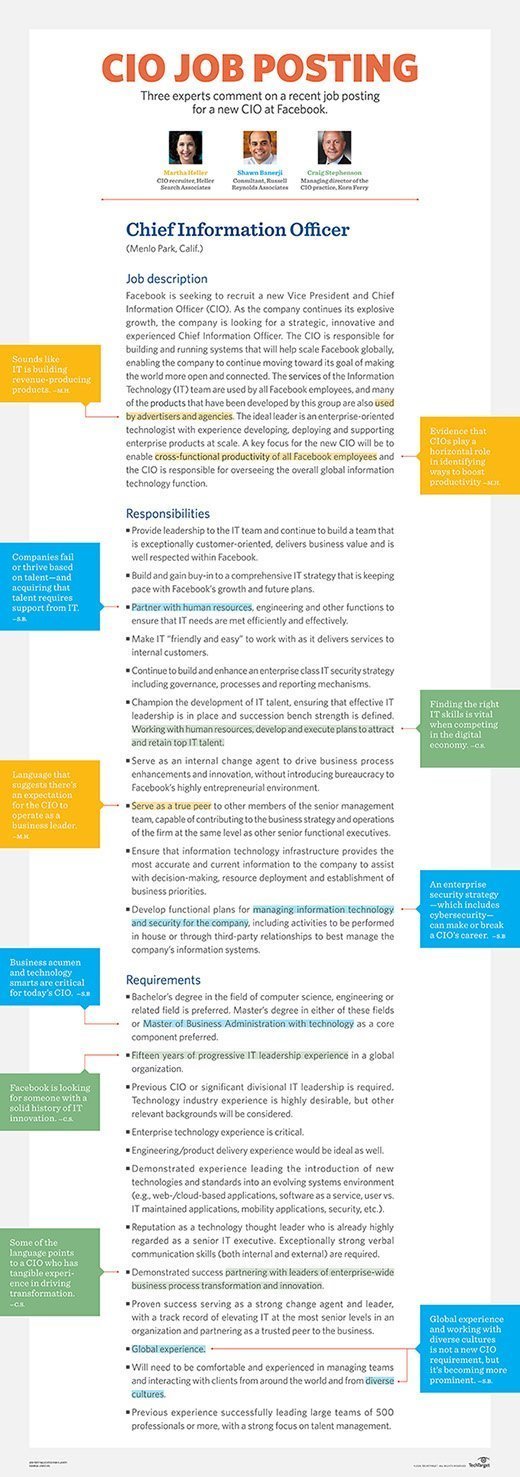What CIOs can learn from the Facebook CIO job posting- Valutrics
Hybrid CIO
One of the notable aspects of the CIO job posting is how traditional IT it reads. The new CIO’s responsibilities will include “governance,” “building and enhancing an enterprise IT security strategy,” driving “business process enhancements,” and making sure the “information technology infrastructure” meets the business’ demands. This is enabling the business type language, according to Shawn Banerji, consultant at Russell Reynolds Associates in New York City. And he wasn’t surprised that it was included in the job description.

“At a lot of technology companies — and Facebook sits at this juxtaposition of media, community and technology, among other things — the corporate IT function isn’t that much different than corporate IT in any media business, or a manufacturing company pursuing an [internet of things] strategy or for that matter, any business where IT is a prominent functional lever,” he said.
But the post also reads modern-day digital IT leader. In the requirements section, the list of degrees includes an MBA with technology as a core component. Banerji sees the mention of an MBA with technology as a telling sign that technology is driving the business. “I think a lot of organizations are looking to technology as a key commercial lever,” he said.
Martha Heller, executive recruiter at Heller Search Associates in Westborough, Mass., pointed to language such as the “products” of the IT team as modern IT language. Based on her research for Be the Business: CIOs in the New Era of IT, Heller found that some CIOs are reconceptualizing the IT operating model by, in part, co-opting the language of the business. ERP, for example, isn’t a technology but a product that needs to be managed.
And she highlighted the mention of enabling “cross-functional productivity” as another example of a contemporary CIO. “If the executive team at Facebook feels employee productivity is something they’ve got to put a premium on, the CIO’s job is to drive that,” she said. “That’s a changing role. That’s not just to deliver apps.”
It’s that combination of a traditional CIO adept at information management, infrastructure and security and someone with the business acumen to contribute to company strategy and vision that will make the position difficult to fill, according to Craig Stephenson, consultant at executive search firm Korn Ferry, headquartered in Los Angeles. “Today’s CEO needs a different kind of CIO,” he said. “The CIO model today is someone who can inspire to help shape and execute the vision for the company in the digital economy.”
